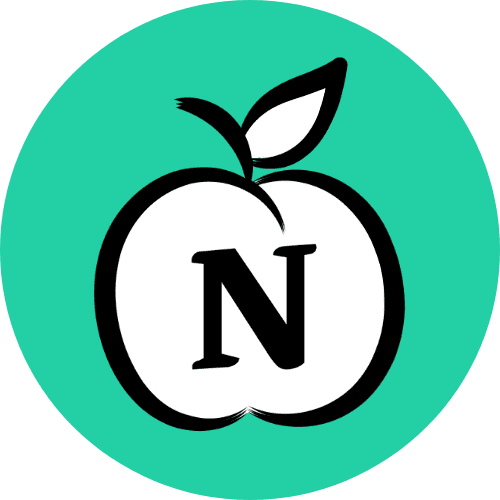Modern Teaching Handbook
Master modern education with the all-in-one resource for educators. Get your free copy now!
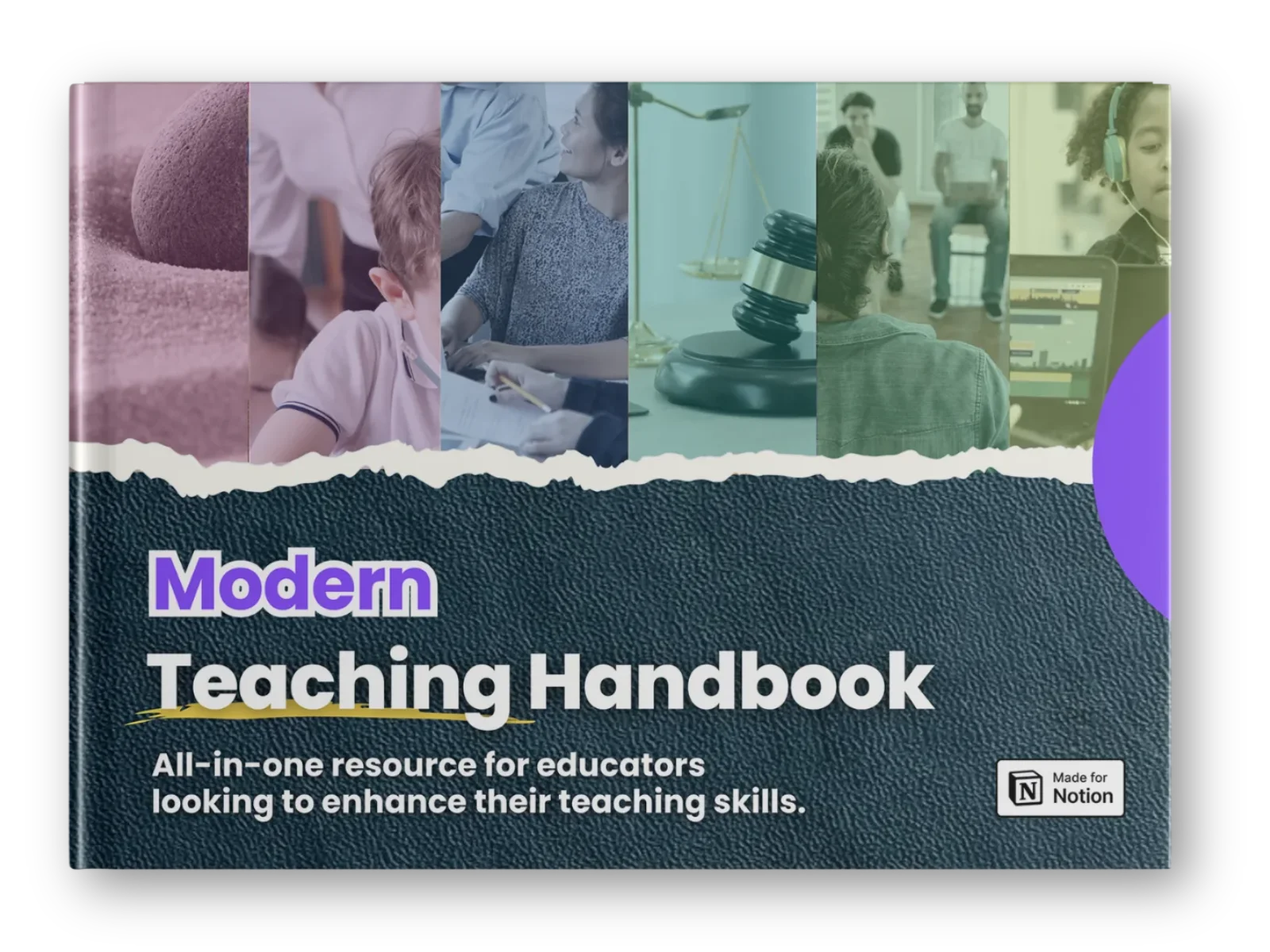
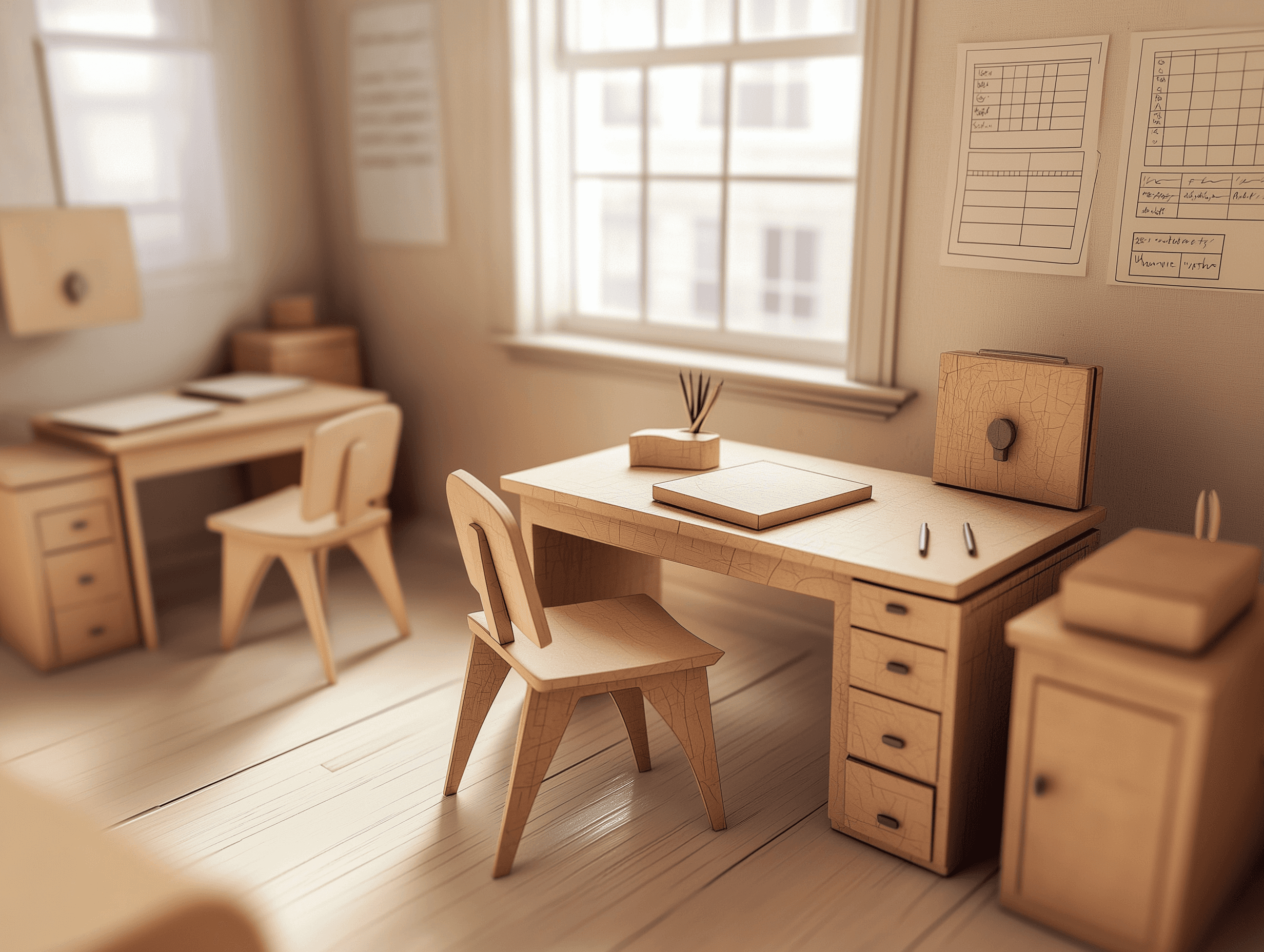

Classroom Organization: Research-Based Strategies That Work
Classroom Organization: Research-Based Strategies That Work
Classroom Organization: Research-Based Strategies That Work

Article by
Milo
ESL Content Coordinator & Educator
ESL Content Coordinator & Educator
All Posts
Imagine stepping into a classroom where books are piled haphazardly, supplies are scattered, and desks seem to be in a random configuration. Feels chaotic, right? Now picture a different space: shelves neatly labeled, desks thoughtfully arranged, and everything in its designated place. Which environment feels more inviting and productive? It’s obvious. Effective classroom organization sets the tone for learning, creating an atmosphere where both teachers and students can thrive.
Imagine stepping into a classroom where books are piled haphazardly, supplies are scattered, and desks seem to be in a random configuration. Feels chaotic, right? Now picture a different space: shelves neatly labeled, desks thoughtfully arranged, and everything in its designated place. Which environment feels more inviting and productive? It’s obvious. Effective classroom organization sets the tone for learning, creating an atmosphere where both teachers and students can thrive.
Modern Teaching Handbook
Master modern education with the all-in-one resource for educators. Get your free copy now!

Modern Teaching Handbook
Master modern education with the all-in-one resource for educators. Get your free copy now!

Modern Teaching Handbook
Master modern education with the all-in-one resource for educators. Get your free copy now!

Understanding the Importance of Classroom Organization
Why Classroom Organization Matters
Classroom organization is more than just aesthetics—it’s the backbone of a functioning learning environment. Without a clear system in place, even the best lesson plans can fall flat. Here’s why organization is crucial:
Reduces Stress: For teachers, knowing exactly where materials are saves valuable teaching time and mental energy. For students, a well-structured space offers clarity and minimizes distractions.
Promotes Independence: Organized classrooms empower students to take charge. They know where the pencils, books, and project supplies are without constantly running to the teacher.
Maximizes Learning Time: Instead of fumbling around for a marker or re-configuring seating mid-class, an organized classroom keeps the focus where it should be—on learning.
Sets the Tone: An orderly space sends a subtle, powerful message: “This is a place of respect and purpose.” And trust me, students pick up on it.
Real-Life Examples: The Magic of Organization
Picture this: You’re in the middle of teaching a math lesson. A student suddenly needs a ruler. In a chaotic classroom, you might lose precious minutes searching for one or sending the student on a scavenger hunt. In an organized classroom, rulers are clearly labeled in a shared supply area. Crisis averted. Lesson continues.
Another example? Think about transitions. In an organized classroom, switching from one activity to the next is seamless because materials and systems are already prepared. Students aren’t left waiting or confused about what comes next. That’s the true power of organization—it keeps the momentum rolling.
Debunking the “Too Busy to Organize” Myth
Some teachers hesitate to prioritize organization, believing they’re simply too busy. Ironically, the time spent upfront on organizing—yes, even just an hour after school—saves countless hours of chaos later on. Plus, organization isn’t about perfection; it’s about creating a system that works for you.
Start small: Focus on a single area, like your desk or the supply cabinet.
Involve students: Let them help! Assign jobs like organizing bookshelves to build responsibility.
Keep it flexible: If something doesn’t work, adjust without guilt.
Remember: Your Classroom Reflects Your Teaching
Here’s something to keep in mind: your classroom environment is silent but powerful. It communicates expectations, structure, and priorities. If things feel jumbled, students may reflect that same energy in their behavior and focus. But when the room is carefully planned, students walk in ready to meet those unspoken expectations with confidence.
As we dive deeper into learning environments, keep asking yourself: What message is my classroom sending to my students right now? And what small tweak could make it even better tomorrow?
Ready to discover the science behind why a well-organized space works wonders? Let’s explore that next!
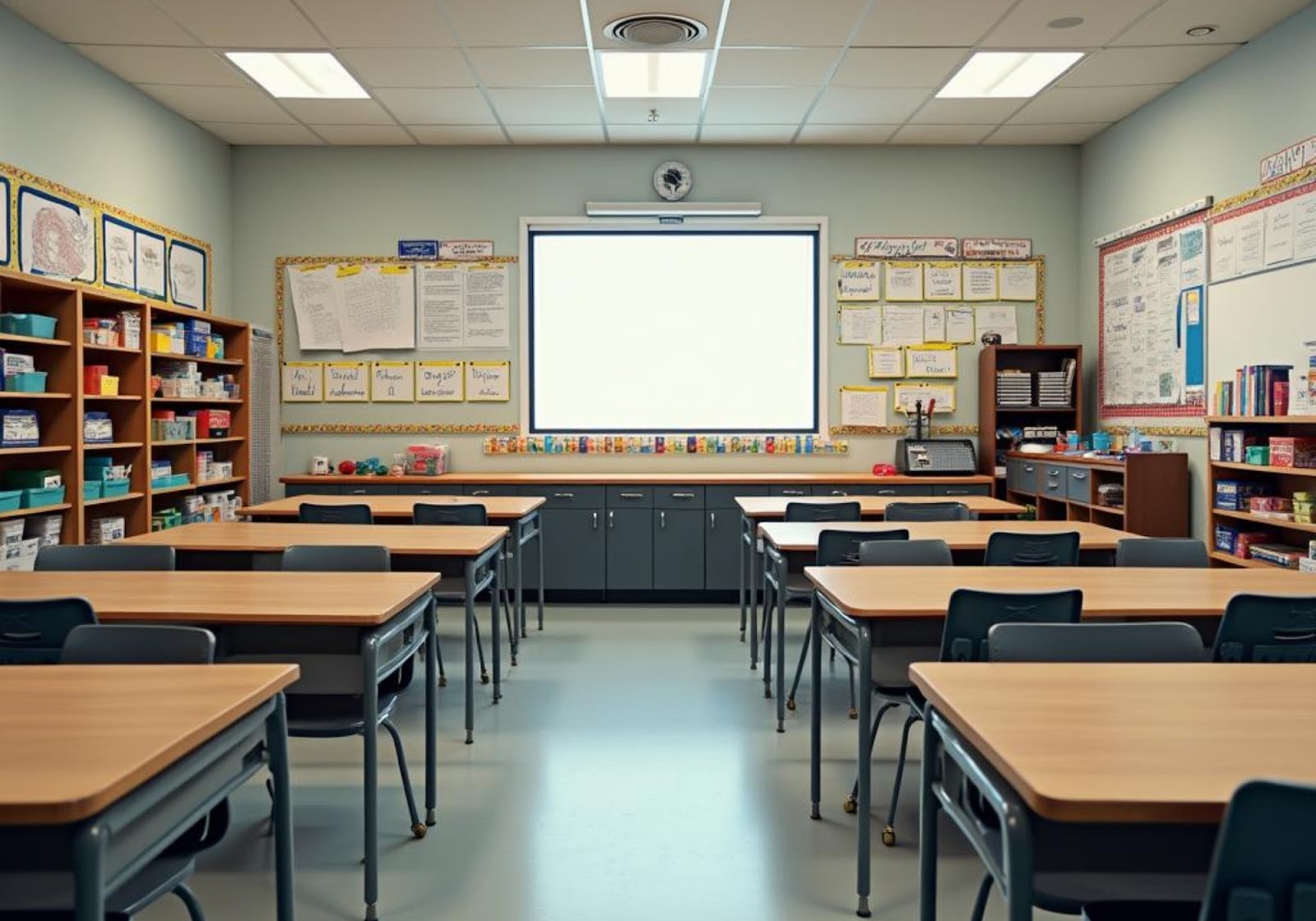
The Science Behind Productive Learning Environments
Have you ever walked into a classroom that instantly made you feel calm, focused, and ready to learn? That’s no accident—it’s science! A productive learning environment isn't just about keeping desks neat and walls decorated—it’s about crafting a space that encourages curiosity, minimizes stress, and supports diverse learning needs. Let’s dive into what makes a classroom truly thrive, backed by research and a sprinkle of common sense.
The Role of the Physical Space in Learning
The way a classroom is physically arranged can directly impact how well students learn. Cluttered, chaotic spaces tend to distract, while thoughtfully organized environments promote focus and engagement. But don’t just take my word for it—studies have shown that students in well-organized classrooms perform better academically and feel less overwhelmed.
Picture this: You’re in a classroom where books are spilling off shelves, papers are scattered across tables, and it’s hard to tell where things belong. Would you feel motivated to focus and participate? Probably not. Now envision a space where everything has a place, distractions are minimized, and resources are easily accessible. Big difference, right?
Small changes can make a big impact. For example:
Rearranging desks to ensure clear sightlines to the teacher can boost attention.
Creating cozy reading nooks with beanbags and bookshelves promotes relaxation and focus during independent learning time.
Bright, natural lighting—not that harsh fluorescent glare—can significantly reduce student fatigue.
Reducing Cognitive Overload
Did you know that our brains can only process so much information at once? This is why classroom decor needs to strike a balance. While vibrant bulletin boards and educational posters are great teaching tools, too much visual clutter can backfire. The human brain craves simplicity when it's trying to focus.
Here’s a quick tip: Rotate decor throughout the year. Early in the semester, prioritize motivational quotes and classroom rules. Later, swap those out for student projects or posters tied to specific lessons. Less is truly more when it comes to maintaining attention.
The Impact of Noise and Acoustics
Noise levels have a sneaky way of sabotaging even the most well-organized classrooms. Research reveals that excessive noise can impair memory, reading comprehension, and overall focus. Think about the hum of chatter from a neighboring classroom or the echo of footsteps in a hallway—it all adds up.
If your classroom noise is hard to control, try these tweaks:
Use rugs or carpets to absorb sound.
Arrange desks in clusters to minimize chatter across the room.
Introduce a "quiet zone" for students who need a calm space to concentrate.
For those who like to get creative, white-noise machines or soft background music can sometimes mask distracting sounds. Just remember to gauge how students respond—what works wonders for one class may not work for another.
Fostering a Comfortable and Inclusive Atmosphere
A underrated element of productive learning environments? Comfort. Students are far more likely to stay engaged when they feel physically at ease. Uncomfortable chairs, poorly placed heating vents, or overcrowded spaces can breed frustration and disrupt focus faster than you’d think.
Consider these simple ways to boost comfort:
Provide flexible seating options like cushions or wobble stools for fidgety learners.
Maintain a balanced room temperature—too hot or too cold, and concentration will plummet.
Ensure that students with disabilities or special needs have easy access to all parts of the room.
Psychological comfort matters too! Creating a sense of belonging in the classroom with inclusive decorations, such as multicultural posters or a "wall of kindness," can make every student feel welcome.
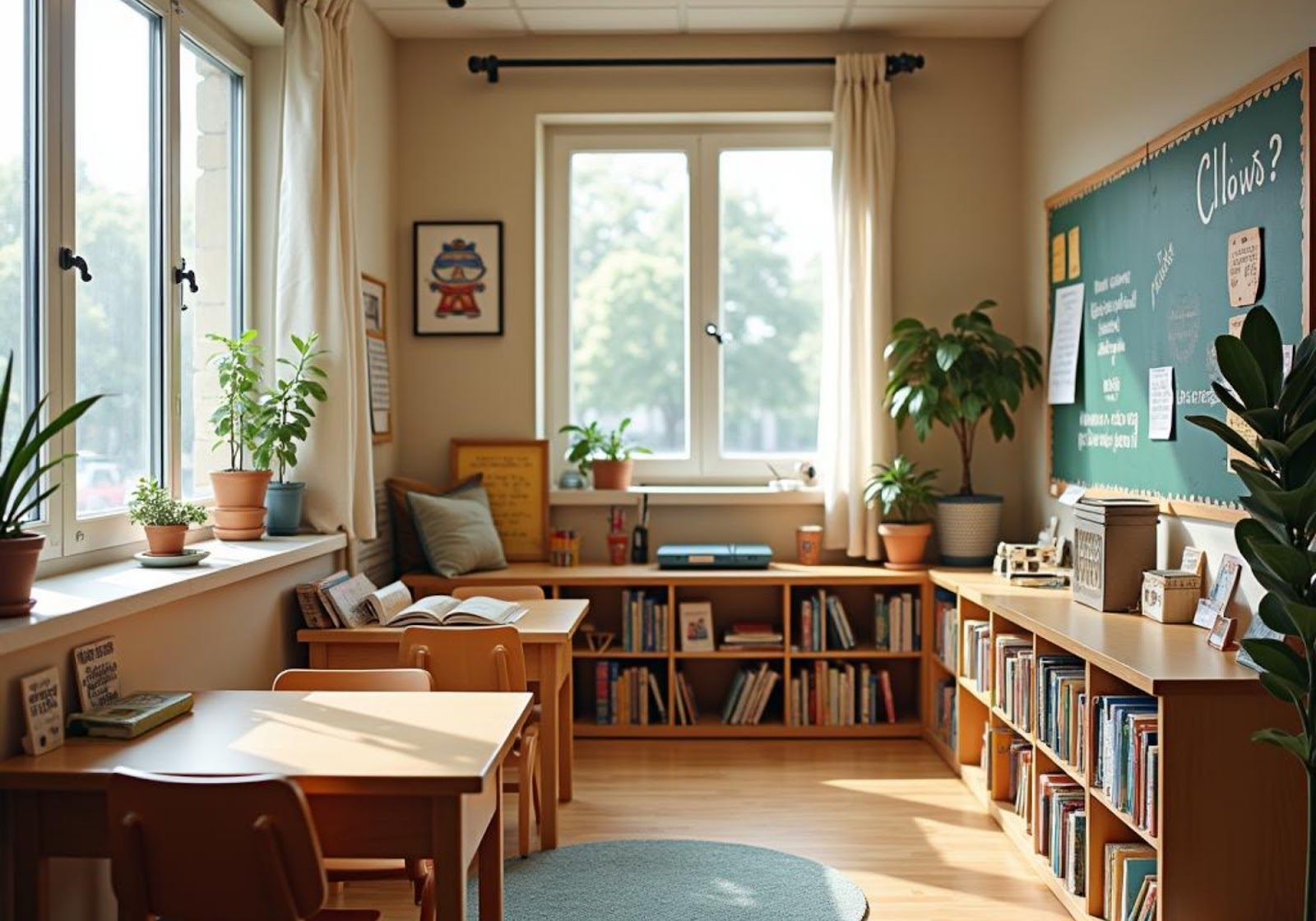
Strategic Seating Arrangements to Enhance Engagement
Do you know that something as simple as where students sit can transform how they engage in class? It’s true. The arrangement of your classroom isn’t just about space—it’s a powerful tool for improving focus, collaboration, and learning outcomes. Let’s dive into why your seating plan might need a glow-up and how to get started.
Why Seating Arrangements Matter
Picture this: you’re attending a workshop, and the only available seat is in the back corner. You can barely see the presenter, and people ahead are blocking your view. Naturally, you feel disengaged and less likely to participate. It's no different for students! Where students sit shapes how they interact with you, their peers, and the material at hand.
The right seating arrangement can:
Promote collaboration by grouping students strategically.
Create equitable opportunities for participation by ensuring every student can see and hear clearly.
Reduce classroom distractions, especially for students prone to losing focus.
Types of Seating Arrangements to Consider
Different goals call for different seating setups. Here are some tried-and-true options to experiment with:
1. Traditional Rows
Classic but effective in certain cases, this layout is useful when you need direct control over the class. It’s excellent for lectures, testing, and minimizing side chatter. However, if overused, rows can stifle peer interaction.
Fun tip: To spice things up, rotate students periodically to change their perspectives—literally and metaphorically!
2. Clusters or Pods
Want to foster dynamic group work? Clusters of desks, where four to six students face each other, are a winner. This arrangement encourages brainstorming, teamwork, and peer learning.
Example: Let’s say you’re doing a science experiment. In pods, each group can work collectively on their hypothesis without feeling isolated.
3. U-Shaped or Horseshoe
Perfect for discussions and presentations, the U-shape promotes open dialogue. Everyone can see each other and feel equally included. You also get excellent mobility to circulate through the middle, so it’s easier to guide conversations or assist students.
Scenario: Hosting a debate about renewable energy? This setup ensures every voice has an equal platform.
4. Flexible Seating
Who says desks have to stay put? Flexible seating lets students choose where they work best—bean bags for relaxed reading, standing desks for restless learners, or traditional desks for focused tasks.
A pro tip: Rotate seat choices weekly to keep things fair and ensure all students experience different opportunities and environments.
Fine-Tuning for Engagement
Once you’ve chosen a seating arrangement, tweak it to fit your students’ needs. Here are some quick tips to make it shine:
Mix personality types: Pair talkative students with quieter ones to balance energies in collaborative setups.
Account for special needs: Make sure students with hearing or vision issues are closer to where instruction happens.
Test and adjust: Nothing is set in stone! If one arrangement isn’t working, don’t hesitate to shuffle the room.
Ending on a High Note
Your students spend hours a day in your classroom—it’s their second home. So why not make it an organized, comfortable, and engaging space that sets the stage for success? Experiment with seating arrangements, ask for student feedback, and watch the magic unfold. One small shift in seating can make a big difference in learning. Ready to roll those desks around?
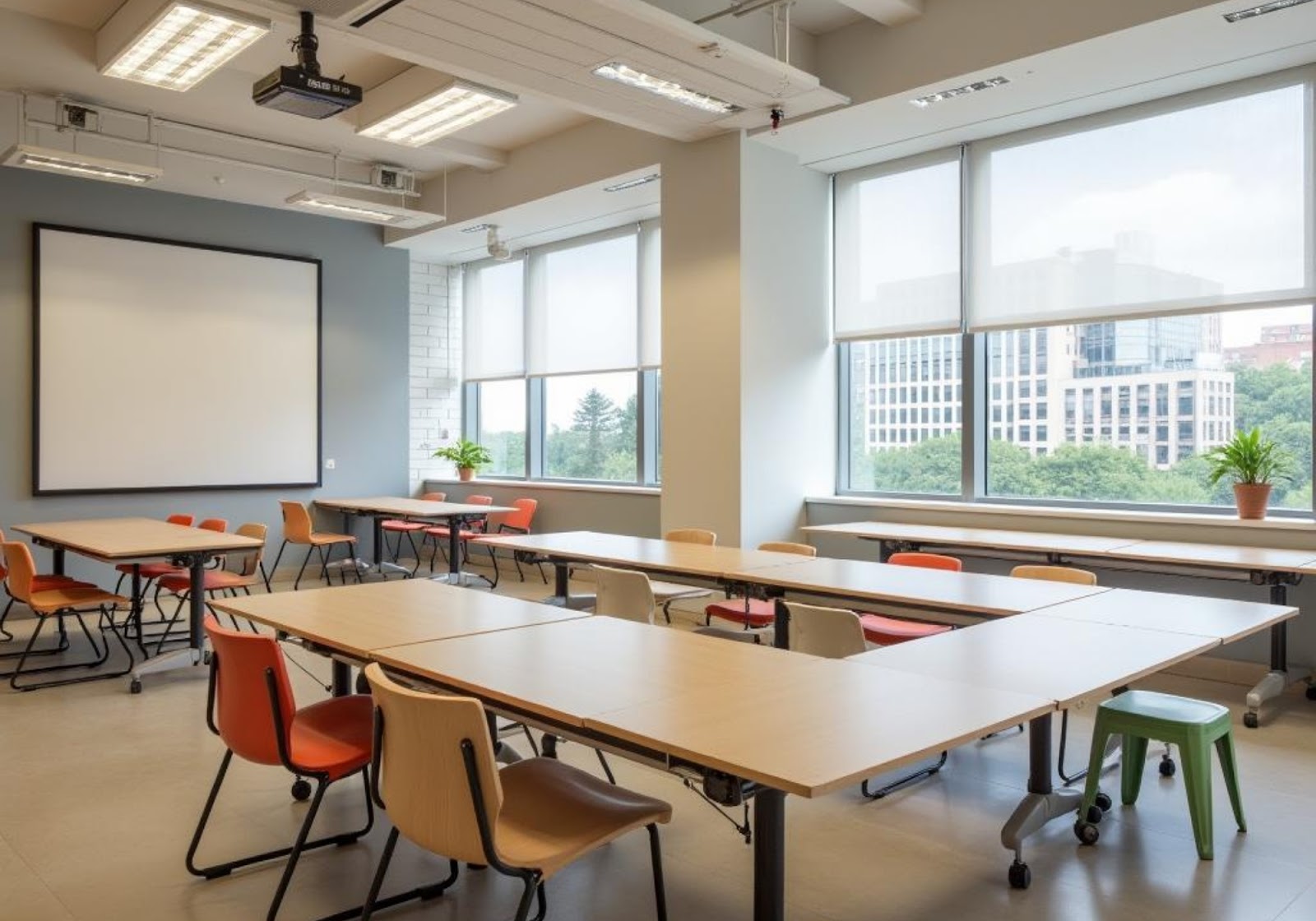
Decluttering for Better Focus: Minimalism in the Classroom
Have you ever walked into a classroom so jam-packed with posters, supplies, and furniture that it felt overwhelming? If you have, you’re not alone—and neither are your students in that experience. A cluttered classroom often equals a cluttered mind, and that’s not exactly a recipe for learning success. Research shows that excessive visual stimuli can hinder focus and disrupt cognitive processes, especially for younger students. This is where minimalism steps in to save the day.
Adopting a decluttered, minimalist approach can transform your classroom into a calm, focused, and inspiring space that fosters learning. Let’s look at how to do it!
Why Decluttering Matters
Think of the classroom as a second home for your students. Just like a messy bedroom can make it hard for someone to relax, a chaotic classroom can make it tough to concentrate. A well-organized, decluttered environment does more than just look pretty—it actively supports better mental clarity and focus.
Fewer distractions: Students can focus on their tasks when there’s less competing for their attention.
Easier navigation: A tidy space allows students to quickly access materials without wasting precious learning time.
Improved comfort: A decluttered room feels more welcoming, making students (and teachers!) feel less stressed.
Practical Steps to Declutter
Now that we know why decluttering matters, let’s dive into actionable tips for decluttering your classroom without losing its personality.
1. Start With What You Don’t Need
It might sound simple, but the first step to decluttering is letting go of unnecessary items. Ask yourself a few honest questions:
Do I really need 35 mismatched markers that barely work?
Is that 10-year-old box of craft supplies still in usable condition?
Are all these posters and displays still relevant to this year’s curriculum?
Once you’ve identified items you no longer need, you can donate them, recycle them, or toss what’s unusable. Be ruthless here—your classroom will thank you later!
2. Prioritize Multi-Functional Items
In a minimalist classroom, less is more—so opt for tools and furniture that serve multiple purposes. Need an example? Use bins or baskets that double as storage and seating. Create bulletin boards that work for both announcements and displaying student work.
This approach reduces clutter while still keeping the space functional and flexible. Plus, it makes tidying up at the end of the day so much faster!
3. Designate Clear Zones
Another trick to keeping your classroom decluttered is designating specific zones for specific activities. For example:
Reading corner: A cozy space with just books and comfy seating.
Creative zone: Art supplies neatly organized in labeled containers for quick access.
Teaching area: Keep the teacher’s desk free of piles, with only essential supplies stored there.
When everything has a designated place, it’s easier for both you and your students to maintain order—and fewer things end up in the "lost and found" pile.
Maintaining Your Decluttered Classroom
Okay, so you’ve decluttered—congrats! But keeping it that way is half the battle. Here are some simple ways to maintain your hard work:
Daily reset: Spend the last 5 minutes of the school day tidying up with your students. Make it a team effort!
“One in, one out” rule: Bring in a new item? Remove an old one to keep clutter from creeping back.
Regular purges: Schedule a “declutter day” every quarter to reassess what you truly need.
Think of this as classroom maintenance—it doesn’t have to be time-consuming, but it’s essential for long-term success.
A Calmer Space, A Brighter Mind
Decluttering isn’t just about aesthetics—it’s about creating an environment where students feel calm, focused, and ready to learn. When your classroom is free from unnecessary clutter, you pave the way for clearer thinking and better academic engagement.
So grab a trash bag, some storage bins, and maybe even a cup of coffee—it’s time to declutter your way to a more peaceful and productive classroom! Ready to give it a try? You might just love the results.

Structuring Daily Routines for Optimal Learning Outcomes
Imagine this: You walk into a classroom where students know exactly what to do, transitions are seamless, and everyone is productive. Sounds like a dream, right? It’s no accident! Establishing well-thought-out daily routines can transform chaos into calm and maximize learning outcomes. Let’s dive into how structuring daily routines can work its magic in the classroom.
Why Daily Routines Matter
Before we get into the "how," let’s talk about the "why." A predictable structure helps students feel more secure because they know what to expect. This is especially important for younger learners or those who struggle with anxiety or focus issues. But routines aren’t just about keeping the peace—they also:
Save time: Less wasted time figuring out “What’s next?” means more time to dive into learning.
Improve focus: Repetitive, predictable patterns condition students to switch gears faster.
Encourage independence: Routine tasks become second nature, empowering students to take ownership of their day.
The Building Blocks of a Daily Routine
Not all daily schedules are created equal. The best ones balance structure with flexibility, leaving wiggle room for creativity and unexpected teachable moments. Here’s a guide to crafting one that works:
1. Start with a Strong Morning Routine
Mornings set the tone for the rest of the day. A chaotic start can result in distracted students, while a structured morning routine gets everyone ready to focus. For example:
Greeting the day: Begin with a cheerful welcome or quick check-in to connect with students as they enter.
Set expectations: Post the daily agenda where students can see it. Encourage them to preview what’s coming.
Warm-up activities: Kick things off with a calm, consistent task like journal writing or a problem-solving activity.
Having this ritual not only reduces anxiety but also minimizes unnecessary questions like, “What are we doing today?”
2. Seamless Transitions = Golden Minutes Saved
Transitions between activities or subjects are notorious time-wasters—unless handled smartly. The key here is consistency.
Use cues like a timer, music, or a verbal prompt to signal it’s time to shift gears.
Teach and practice routines for common transitions, such as moving between desks, gathering materials, or lining up.
Keep it tight! Limit unstructured “hangout” minutes to avoid sinking into distraction zones.
3. Prioritize Mental Breaks
Believe it or not, breaks don’t waste time—they save it. Utilizing brain breaks or quick physical activities can reset attention spans and bring energy back to the classroom. Think short stretches, breathing exercises, or even a fun 2-minute dance session.
4. Closing with Purpose
End the day how you started it: on a high note and with clarity. A consistent end-of-day routine may include:
Reflecting: Ask students to share one thing they learned or enjoyed that day.
Organizing: Pack up materials in a calm, step-by-step manner.
Previewing: Give a sneak peek of tomorrow to build excitement and reduce uncertainty.
Personalizing Routines for Your Classroom
Here’s the kicker: No two classrooms are the same, and routines will look different depending on your students and teaching style.
For younger kids: Incorporate visual schedules and frequent reminders.
For older students: Use planners, apps, or dry-erase boards to encourage self-management.
For mixed-ability groups: Build in extra scaffolding for students who need it, while allowing advanced learners to move independently.
The Long-Term Payoff
Think of classroom routines as the scaffolding holding up the learning process. Over time, the habits you instill will create a foundation your students can carry forward into life. Besides, who doesn’t love the sound of an efficient, happy classroom?
So, what’s stopping you? Start small—maybe perfect one transition this week—and keep tweaking until you’ve got a routine that feels as smooth as a well-choreographed dance.
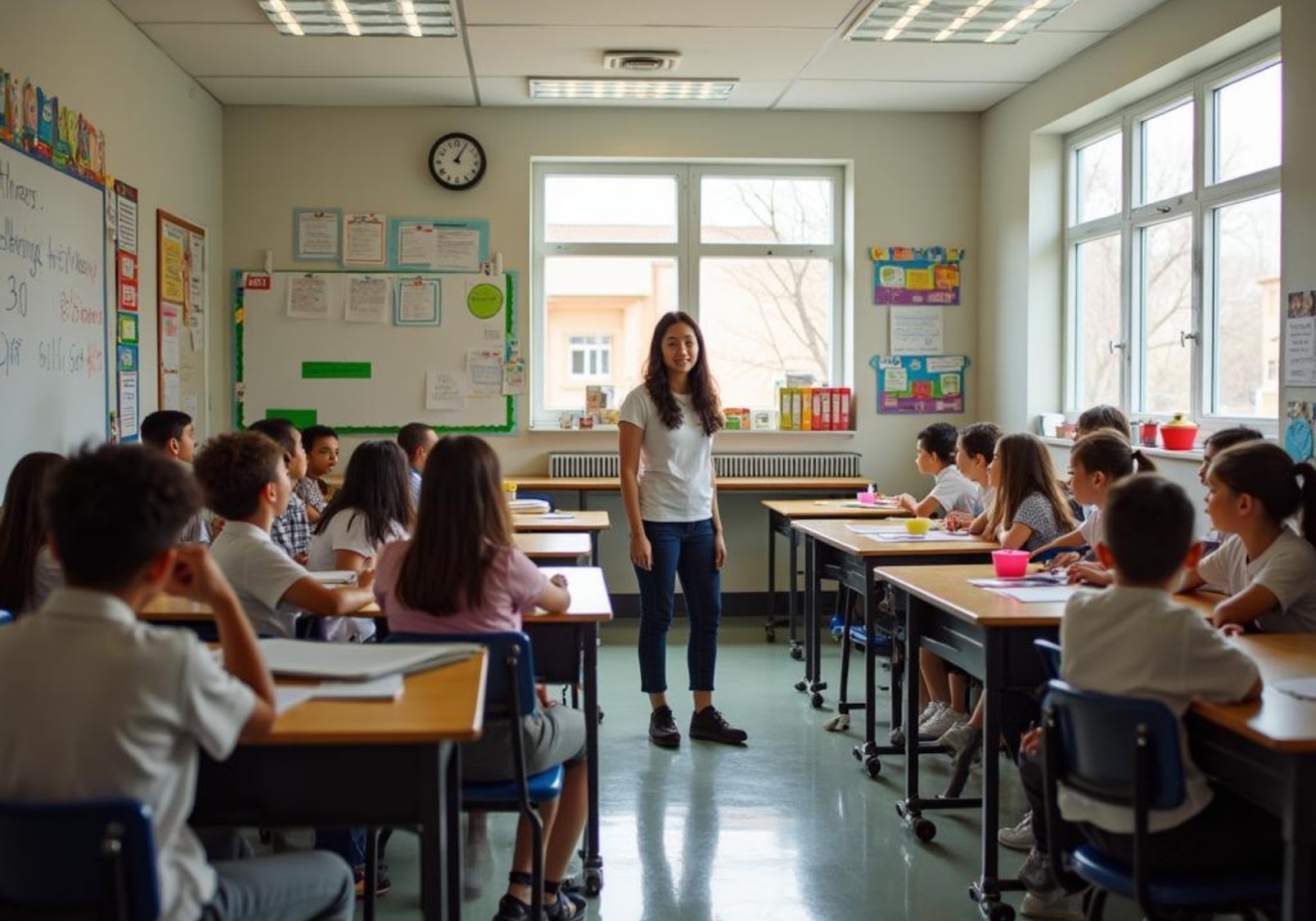
Leveraging Technology for Digital Classroom Organization
Imagine walking into a classroom where paper piles are replaced by sleek digital systems, schedules sync automatically, and students have a fun way to track their progress. Sounds futuristic, right? Well, this isn’t a sci-fi movie—this is the power of leveraging technology for classroom organization! Let’s dive into how you can use tech tools to create a classroom environment that’s efficient, engaging, and maybe even a little magical.
The Paperless Revolution
Gone are the days when desks were buried under endless worksheets and permission slips. Now, classroom organization can live in the cloud! Here’s why going digital is a must:
Convenience: Platforms like Google Classroom and Microsoft Teams make sharing assignments, announcements, and resources as easy as clicking "send."
Storage Made Simple: No more filing cabinets stuffed to the brim! Cloud storage tools like Google Drive or Dropbox keep everything accessible and orderly.
Eco-Friendly: By going paperless, you save trees and teach students about sustainability.
For example, instead of printing weekly schedules, upload them to a shared class calendar. Students and parents can access it whenever they need, and you’ll never hear, “I lost the handout!” again.
Simplified Communication
Raise your hand if you’ve ever spent hours replying to a mountain of emails or sending reminders on sticky notes. Digital tools can rescue your sanity here too!
Use apps like Remind to contact students or their parents. You can send group messages, individual updates, or emergency alerts in a snap.
Platforms like ClassDojo not only allow communication but also help you track behavior, share photos, and celebrate student accomplishments.
Picture this: Instead of chasing after students for missing permission slips, you send a quick text through the app. Problem solved!
Streamlined Workflow with Task Management
Whether it’s lesson-planning, tracking assignments, or prepping for that 8 AM meeting, task management tools can help you stay on top of it all.
Trello: Great for creating to-do lists or organizing long-term projects. It’s colorful, customizable, and hard to mess up—perfect for busy teachers!
Asana: For collaborative teams, this tool lets you map out timelines, assign tasks, and track deadlines with ease.
Imagine setting up a Trello board for an upcoming science fair. One column lists tasks like booking the venue, while another tracks which students have submitted their projects. Everything at a glance!
Engaging Students Through Interactive Tech
Why organize a classroom if the students aren’t engaged in the learning process? Here’s where technology shines:
Interactive Whiteboards: Tools like Promethean or SMART Boards make lessons dynamic. Organize your slides, quizzes, and videos in one place.
Student Apps: Tools such as Kahoot or Quizizz turn assessments into fun, interactive games that students can take on their devices.
This transforms lessons from “just another lecture” into “the best day ever!” Bonus: It reduces your reliance on traditional teaching props, keeping your classroom tidy and screen-friendly.
Managing Digital Overload
With so many tech options, it’s easy to go overboard and overwhelm yourself (and your students!). Keep these tips in mind:
Start small: Introduce one or two tools at a time to test what works best.
Consistency is key: Stick to the same platforms for communication and lesson delivery to avoid confusion.
Take breaks: Sometimes, old-school approaches like group discussions or hands-on activities are just as effective—and no device is needed.
Wrapping It Up
Using technology for digital classroom organization isn’t just efficient—it’s transformative! From managing schedules to tracking tasks, these tools reduce clutter and free up more time for what really matters: teaching. Plus, let’s face it, the students will think you’re the coolest teacher ever when you say, “Log into our Kahoot quiz now!”
Ready to give it a shot? Start small, learn as you go, and before you know it, you’ll be running a classroom that’s sleek, streamlined, and tech-savvy!

Visual Aids and Labels: Simplifying Accessibility for Students
Imagine walking into a classroom full of unmarked shelves, random stacks of paper, and heaps of art supplies with no rhyme or reason. Sound overwhelming? Now, envision the same room where everything is labeled, color-coded, and easy to grab. Feels better, right? That’s the power of visual aids and labels. They’re not just there "to look cute"—these tools help students (and teachers!) stay organized and focused. Let’s dive into how they work and why they’re a game-changer for classroom accessibility.
Why Visuals Are Key for Learning
Visual aids are like road signs for the brain—they guide students and make it easier to navigate their environment. Studies show that up to 65% of the population are visual learners, meaning they process information best through images, charts, and other visual tools. In a classroom setting, these aids empower students to independently locate materials, follow directions, and understand complex concepts.
Here’s why visuals matter:
They reduce cognitive overload, meaning students spend less time figuring out where items are and more time using them.
They promote independence—students don’t need to ask, “Where’s the glue?” five times a day.
They support diverse learning needs, including students with limited reading skills, ADHD, or those who are neurodiverse.
The Magic of Labels
Labels might feel old-school, but trust me—they’re timeless for a reason! When every drawer, cubby, and bin in your classroom is labeled, you create instant clarity.
A few tips for labeling like a pro:
Pair Text with Pictures: If it’s a bin for scissors, include both the word "Scissors" and a small icon of scissors. This works wonders for younger learners or English language learners (ELL).
Color-Code Everything: Assign a color to each subject or purpose. For example, math materials could have green labels, reading could have blue, and art could have yellow.
Be Consistent: Use the same font, size, and format across all labels to keep things uniform and visually appealing.
An example: Instead of a random stack of construction paper, have a labeled bin that says "Construction Paper – Blue" with a small blue square icon. This added clarity speeds things up for everyone.
Creative Visual Aids for Your Classroom
So, what counts as a “visual aid”? Lots of things! Charts, posters, laminated instructions, whiteboard illustrations, and even fun wall art. Here are a few ideas you can try:
Photo-Based Directions: If your routine involves steps (like cleaning up or completing a project), display them in numbered charts with pictures alongside text. Think: “Step 1: Return scissors to the bin [image of scissors]. Step 2: Wipe down the table [image of a cloth].”
Interactive Bulletin Boards: Pin up a daily schedule where students can move magnetic or Velcro icons to mark which task is next.
Traffic Light Behavior Chart: Use green, yellow, and red symbols to visually signal classroom expectations.
Getting Students Involved
Here’s a fun twist—ask your students to help create visual aids and labels! Turn it into an art or handwriting project:
Have them draw small icons for book bins or supply stations.
Let them brainstorm creative names for different areas (e.g., “Imagination Station” for the reading corner).
Get input on color schemes. Trust me, ownership makes a huge difference—they’ll feel proud AND be more likely to use the system.
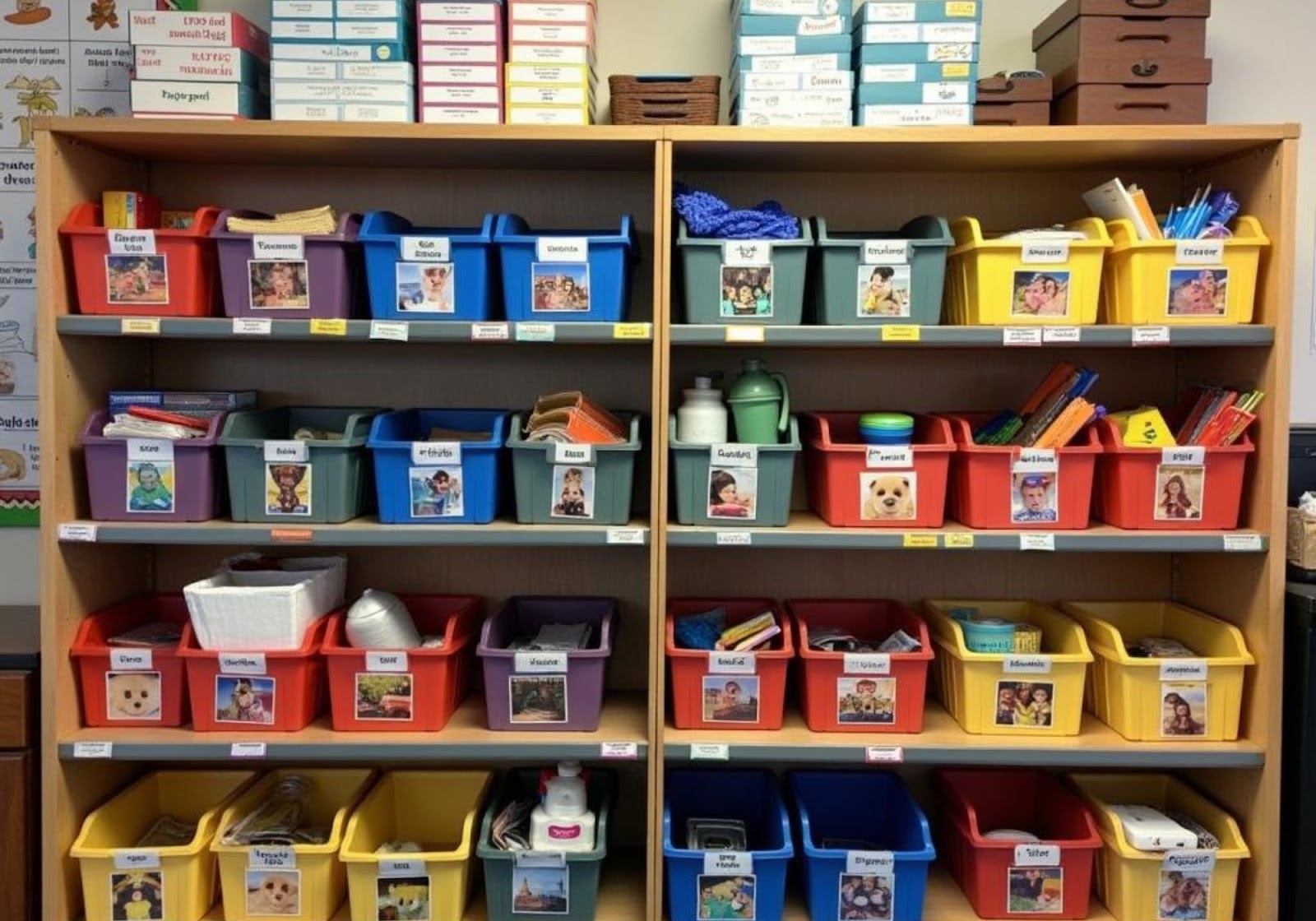
Making Accessibility Second Nature
When used consistently, visual aids and labels become more than just tools. They turn into habits. Students will instinctively know where to find (and return!) things, which means fewer interruptions during lessons and a smoother overall flow.
So next time you’re reorganizing your classroom, think of visuals as little assistants that make everyone’s life easier—including yours. You’ll thank yourself when you don’t hear “Where’s the pencil sharpener?” for the hundredth time that week!
Understanding the Importance of Classroom Organization
Why Classroom Organization Matters
Classroom organization is more than just aesthetics—it’s the backbone of a functioning learning environment. Without a clear system in place, even the best lesson plans can fall flat. Here’s why organization is crucial:
Reduces Stress: For teachers, knowing exactly where materials are saves valuable teaching time and mental energy. For students, a well-structured space offers clarity and minimizes distractions.
Promotes Independence: Organized classrooms empower students to take charge. They know where the pencils, books, and project supplies are without constantly running to the teacher.
Maximizes Learning Time: Instead of fumbling around for a marker or re-configuring seating mid-class, an organized classroom keeps the focus where it should be—on learning.
Sets the Tone: An orderly space sends a subtle, powerful message: “This is a place of respect and purpose.” And trust me, students pick up on it.
Real-Life Examples: The Magic of Organization
Picture this: You’re in the middle of teaching a math lesson. A student suddenly needs a ruler. In a chaotic classroom, you might lose precious minutes searching for one or sending the student on a scavenger hunt. In an organized classroom, rulers are clearly labeled in a shared supply area. Crisis averted. Lesson continues.
Another example? Think about transitions. In an organized classroom, switching from one activity to the next is seamless because materials and systems are already prepared. Students aren’t left waiting or confused about what comes next. That’s the true power of organization—it keeps the momentum rolling.
Debunking the “Too Busy to Organize” Myth
Some teachers hesitate to prioritize organization, believing they’re simply too busy. Ironically, the time spent upfront on organizing—yes, even just an hour after school—saves countless hours of chaos later on. Plus, organization isn’t about perfection; it’s about creating a system that works for you.
Start small: Focus on a single area, like your desk or the supply cabinet.
Involve students: Let them help! Assign jobs like organizing bookshelves to build responsibility.
Keep it flexible: If something doesn’t work, adjust without guilt.
Remember: Your Classroom Reflects Your Teaching
Here’s something to keep in mind: your classroom environment is silent but powerful. It communicates expectations, structure, and priorities. If things feel jumbled, students may reflect that same energy in their behavior and focus. But when the room is carefully planned, students walk in ready to meet those unspoken expectations with confidence.
As we dive deeper into learning environments, keep asking yourself: What message is my classroom sending to my students right now? And what small tweak could make it even better tomorrow?
Ready to discover the science behind why a well-organized space works wonders? Let’s explore that next!

The Science Behind Productive Learning Environments
Have you ever walked into a classroom that instantly made you feel calm, focused, and ready to learn? That’s no accident—it’s science! A productive learning environment isn't just about keeping desks neat and walls decorated—it’s about crafting a space that encourages curiosity, minimizes stress, and supports diverse learning needs. Let’s dive into what makes a classroom truly thrive, backed by research and a sprinkle of common sense.
The Role of the Physical Space in Learning
The way a classroom is physically arranged can directly impact how well students learn. Cluttered, chaotic spaces tend to distract, while thoughtfully organized environments promote focus and engagement. But don’t just take my word for it—studies have shown that students in well-organized classrooms perform better academically and feel less overwhelmed.
Picture this: You’re in a classroom where books are spilling off shelves, papers are scattered across tables, and it’s hard to tell where things belong. Would you feel motivated to focus and participate? Probably not. Now envision a space where everything has a place, distractions are minimized, and resources are easily accessible. Big difference, right?
Small changes can make a big impact. For example:
Rearranging desks to ensure clear sightlines to the teacher can boost attention.
Creating cozy reading nooks with beanbags and bookshelves promotes relaxation and focus during independent learning time.
Bright, natural lighting—not that harsh fluorescent glare—can significantly reduce student fatigue.
Reducing Cognitive Overload
Did you know that our brains can only process so much information at once? This is why classroom decor needs to strike a balance. While vibrant bulletin boards and educational posters are great teaching tools, too much visual clutter can backfire. The human brain craves simplicity when it's trying to focus.
Here’s a quick tip: Rotate decor throughout the year. Early in the semester, prioritize motivational quotes and classroom rules. Later, swap those out for student projects or posters tied to specific lessons. Less is truly more when it comes to maintaining attention.
The Impact of Noise and Acoustics
Noise levels have a sneaky way of sabotaging even the most well-organized classrooms. Research reveals that excessive noise can impair memory, reading comprehension, and overall focus. Think about the hum of chatter from a neighboring classroom or the echo of footsteps in a hallway—it all adds up.
If your classroom noise is hard to control, try these tweaks:
Use rugs or carpets to absorb sound.
Arrange desks in clusters to minimize chatter across the room.
Introduce a "quiet zone" for students who need a calm space to concentrate.
For those who like to get creative, white-noise machines or soft background music can sometimes mask distracting sounds. Just remember to gauge how students respond—what works wonders for one class may not work for another.
Fostering a Comfortable and Inclusive Atmosphere
A underrated element of productive learning environments? Comfort. Students are far more likely to stay engaged when they feel physically at ease. Uncomfortable chairs, poorly placed heating vents, or overcrowded spaces can breed frustration and disrupt focus faster than you’d think.
Consider these simple ways to boost comfort:
Provide flexible seating options like cushions or wobble stools for fidgety learners.
Maintain a balanced room temperature—too hot or too cold, and concentration will plummet.
Ensure that students with disabilities or special needs have easy access to all parts of the room.
Psychological comfort matters too! Creating a sense of belonging in the classroom with inclusive decorations, such as multicultural posters or a "wall of kindness," can make every student feel welcome.

Strategic Seating Arrangements to Enhance Engagement
Do you know that something as simple as where students sit can transform how they engage in class? It’s true. The arrangement of your classroom isn’t just about space—it’s a powerful tool for improving focus, collaboration, and learning outcomes. Let’s dive into why your seating plan might need a glow-up and how to get started.
Why Seating Arrangements Matter
Picture this: you’re attending a workshop, and the only available seat is in the back corner. You can barely see the presenter, and people ahead are blocking your view. Naturally, you feel disengaged and less likely to participate. It's no different for students! Where students sit shapes how they interact with you, their peers, and the material at hand.
The right seating arrangement can:
Promote collaboration by grouping students strategically.
Create equitable opportunities for participation by ensuring every student can see and hear clearly.
Reduce classroom distractions, especially for students prone to losing focus.
Types of Seating Arrangements to Consider
Different goals call for different seating setups. Here are some tried-and-true options to experiment with:
1. Traditional Rows
Classic but effective in certain cases, this layout is useful when you need direct control over the class. It’s excellent for lectures, testing, and minimizing side chatter. However, if overused, rows can stifle peer interaction.
Fun tip: To spice things up, rotate students periodically to change their perspectives—literally and metaphorically!
2. Clusters or Pods
Want to foster dynamic group work? Clusters of desks, where four to six students face each other, are a winner. This arrangement encourages brainstorming, teamwork, and peer learning.
Example: Let’s say you’re doing a science experiment. In pods, each group can work collectively on their hypothesis without feeling isolated.
3. U-Shaped or Horseshoe
Perfect for discussions and presentations, the U-shape promotes open dialogue. Everyone can see each other and feel equally included. You also get excellent mobility to circulate through the middle, so it’s easier to guide conversations or assist students.
Scenario: Hosting a debate about renewable energy? This setup ensures every voice has an equal platform.
4. Flexible Seating
Who says desks have to stay put? Flexible seating lets students choose where they work best—bean bags for relaxed reading, standing desks for restless learners, or traditional desks for focused tasks.
A pro tip: Rotate seat choices weekly to keep things fair and ensure all students experience different opportunities and environments.
Fine-Tuning for Engagement
Once you’ve chosen a seating arrangement, tweak it to fit your students’ needs. Here are some quick tips to make it shine:
Mix personality types: Pair talkative students with quieter ones to balance energies in collaborative setups.
Account for special needs: Make sure students with hearing or vision issues are closer to where instruction happens.
Test and adjust: Nothing is set in stone! If one arrangement isn’t working, don’t hesitate to shuffle the room.
Ending on a High Note
Your students spend hours a day in your classroom—it’s their second home. So why not make it an organized, comfortable, and engaging space that sets the stage for success? Experiment with seating arrangements, ask for student feedback, and watch the magic unfold. One small shift in seating can make a big difference in learning. Ready to roll those desks around?

Decluttering for Better Focus: Minimalism in the Classroom
Have you ever walked into a classroom so jam-packed with posters, supplies, and furniture that it felt overwhelming? If you have, you’re not alone—and neither are your students in that experience. A cluttered classroom often equals a cluttered mind, and that’s not exactly a recipe for learning success. Research shows that excessive visual stimuli can hinder focus and disrupt cognitive processes, especially for younger students. This is where minimalism steps in to save the day.
Adopting a decluttered, minimalist approach can transform your classroom into a calm, focused, and inspiring space that fosters learning. Let’s look at how to do it!
Why Decluttering Matters
Think of the classroom as a second home for your students. Just like a messy bedroom can make it hard for someone to relax, a chaotic classroom can make it tough to concentrate. A well-organized, decluttered environment does more than just look pretty—it actively supports better mental clarity and focus.
Fewer distractions: Students can focus on their tasks when there’s less competing for their attention.
Easier navigation: A tidy space allows students to quickly access materials without wasting precious learning time.
Improved comfort: A decluttered room feels more welcoming, making students (and teachers!) feel less stressed.
Practical Steps to Declutter
Now that we know why decluttering matters, let’s dive into actionable tips for decluttering your classroom without losing its personality.
1. Start With What You Don’t Need
It might sound simple, but the first step to decluttering is letting go of unnecessary items. Ask yourself a few honest questions:
Do I really need 35 mismatched markers that barely work?
Is that 10-year-old box of craft supplies still in usable condition?
Are all these posters and displays still relevant to this year’s curriculum?
Once you’ve identified items you no longer need, you can donate them, recycle them, or toss what’s unusable. Be ruthless here—your classroom will thank you later!
2. Prioritize Multi-Functional Items
In a minimalist classroom, less is more—so opt for tools and furniture that serve multiple purposes. Need an example? Use bins or baskets that double as storage and seating. Create bulletin boards that work for both announcements and displaying student work.
This approach reduces clutter while still keeping the space functional and flexible. Plus, it makes tidying up at the end of the day so much faster!
3. Designate Clear Zones
Another trick to keeping your classroom decluttered is designating specific zones for specific activities. For example:
Reading corner: A cozy space with just books and comfy seating.
Creative zone: Art supplies neatly organized in labeled containers for quick access.
Teaching area: Keep the teacher’s desk free of piles, with only essential supplies stored there.
When everything has a designated place, it’s easier for both you and your students to maintain order—and fewer things end up in the "lost and found" pile.
Maintaining Your Decluttered Classroom
Okay, so you’ve decluttered—congrats! But keeping it that way is half the battle. Here are some simple ways to maintain your hard work:
Daily reset: Spend the last 5 minutes of the school day tidying up with your students. Make it a team effort!
“One in, one out” rule: Bring in a new item? Remove an old one to keep clutter from creeping back.
Regular purges: Schedule a “declutter day” every quarter to reassess what you truly need.
Think of this as classroom maintenance—it doesn’t have to be time-consuming, but it’s essential for long-term success.
A Calmer Space, A Brighter Mind
Decluttering isn’t just about aesthetics—it’s about creating an environment where students feel calm, focused, and ready to learn. When your classroom is free from unnecessary clutter, you pave the way for clearer thinking and better academic engagement.
So grab a trash bag, some storage bins, and maybe even a cup of coffee—it’s time to declutter your way to a more peaceful and productive classroom! Ready to give it a try? You might just love the results.

Structuring Daily Routines for Optimal Learning Outcomes
Imagine this: You walk into a classroom where students know exactly what to do, transitions are seamless, and everyone is productive. Sounds like a dream, right? It’s no accident! Establishing well-thought-out daily routines can transform chaos into calm and maximize learning outcomes. Let’s dive into how structuring daily routines can work its magic in the classroom.
Why Daily Routines Matter
Before we get into the "how," let’s talk about the "why." A predictable structure helps students feel more secure because they know what to expect. This is especially important for younger learners or those who struggle with anxiety or focus issues. But routines aren’t just about keeping the peace—they also:
Save time: Less wasted time figuring out “What’s next?” means more time to dive into learning.
Improve focus: Repetitive, predictable patterns condition students to switch gears faster.
Encourage independence: Routine tasks become second nature, empowering students to take ownership of their day.
The Building Blocks of a Daily Routine
Not all daily schedules are created equal. The best ones balance structure with flexibility, leaving wiggle room for creativity and unexpected teachable moments. Here’s a guide to crafting one that works:
1. Start with a Strong Morning Routine
Mornings set the tone for the rest of the day. A chaotic start can result in distracted students, while a structured morning routine gets everyone ready to focus. For example:
Greeting the day: Begin with a cheerful welcome or quick check-in to connect with students as they enter.
Set expectations: Post the daily agenda where students can see it. Encourage them to preview what’s coming.
Warm-up activities: Kick things off with a calm, consistent task like journal writing or a problem-solving activity.
Having this ritual not only reduces anxiety but also minimizes unnecessary questions like, “What are we doing today?”
2. Seamless Transitions = Golden Minutes Saved
Transitions between activities or subjects are notorious time-wasters—unless handled smartly. The key here is consistency.
Use cues like a timer, music, or a verbal prompt to signal it’s time to shift gears.
Teach and practice routines for common transitions, such as moving between desks, gathering materials, or lining up.
Keep it tight! Limit unstructured “hangout” minutes to avoid sinking into distraction zones.
3. Prioritize Mental Breaks
Believe it or not, breaks don’t waste time—they save it. Utilizing brain breaks or quick physical activities can reset attention spans and bring energy back to the classroom. Think short stretches, breathing exercises, or even a fun 2-minute dance session.
4. Closing with Purpose
End the day how you started it: on a high note and with clarity. A consistent end-of-day routine may include:
Reflecting: Ask students to share one thing they learned or enjoyed that day.
Organizing: Pack up materials in a calm, step-by-step manner.
Previewing: Give a sneak peek of tomorrow to build excitement and reduce uncertainty.
Personalizing Routines for Your Classroom
Here’s the kicker: No two classrooms are the same, and routines will look different depending on your students and teaching style.
For younger kids: Incorporate visual schedules and frequent reminders.
For older students: Use planners, apps, or dry-erase boards to encourage self-management.
For mixed-ability groups: Build in extra scaffolding for students who need it, while allowing advanced learners to move independently.
The Long-Term Payoff
Think of classroom routines as the scaffolding holding up the learning process. Over time, the habits you instill will create a foundation your students can carry forward into life. Besides, who doesn’t love the sound of an efficient, happy classroom?
So, what’s stopping you? Start small—maybe perfect one transition this week—and keep tweaking until you’ve got a routine that feels as smooth as a well-choreographed dance.

Leveraging Technology for Digital Classroom Organization
Imagine walking into a classroom where paper piles are replaced by sleek digital systems, schedules sync automatically, and students have a fun way to track their progress. Sounds futuristic, right? Well, this isn’t a sci-fi movie—this is the power of leveraging technology for classroom organization! Let’s dive into how you can use tech tools to create a classroom environment that’s efficient, engaging, and maybe even a little magical.
The Paperless Revolution
Gone are the days when desks were buried under endless worksheets and permission slips. Now, classroom organization can live in the cloud! Here’s why going digital is a must:
Convenience: Platforms like Google Classroom and Microsoft Teams make sharing assignments, announcements, and resources as easy as clicking "send."
Storage Made Simple: No more filing cabinets stuffed to the brim! Cloud storage tools like Google Drive or Dropbox keep everything accessible and orderly.
Eco-Friendly: By going paperless, you save trees and teach students about sustainability.
For example, instead of printing weekly schedules, upload them to a shared class calendar. Students and parents can access it whenever they need, and you’ll never hear, “I lost the handout!” again.
Simplified Communication
Raise your hand if you’ve ever spent hours replying to a mountain of emails or sending reminders on sticky notes. Digital tools can rescue your sanity here too!
Use apps like Remind to contact students or their parents. You can send group messages, individual updates, or emergency alerts in a snap.
Platforms like ClassDojo not only allow communication but also help you track behavior, share photos, and celebrate student accomplishments.
Picture this: Instead of chasing after students for missing permission slips, you send a quick text through the app. Problem solved!
Streamlined Workflow with Task Management
Whether it’s lesson-planning, tracking assignments, or prepping for that 8 AM meeting, task management tools can help you stay on top of it all.
Trello: Great for creating to-do lists or organizing long-term projects. It’s colorful, customizable, and hard to mess up—perfect for busy teachers!
Asana: For collaborative teams, this tool lets you map out timelines, assign tasks, and track deadlines with ease.
Imagine setting up a Trello board for an upcoming science fair. One column lists tasks like booking the venue, while another tracks which students have submitted their projects. Everything at a glance!
Engaging Students Through Interactive Tech
Why organize a classroom if the students aren’t engaged in the learning process? Here’s where technology shines:
Interactive Whiteboards: Tools like Promethean or SMART Boards make lessons dynamic. Organize your slides, quizzes, and videos in one place.
Student Apps: Tools such as Kahoot or Quizizz turn assessments into fun, interactive games that students can take on their devices.
This transforms lessons from “just another lecture” into “the best day ever!” Bonus: It reduces your reliance on traditional teaching props, keeping your classroom tidy and screen-friendly.
Managing Digital Overload
With so many tech options, it’s easy to go overboard and overwhelm yourself (and your students!). Keep these tips in mind:
Start small: Introduce one or two tools at a time to test what works best.
Consistency is key: Stick to the same platforms for communication and lesson delivery to avoid confusion.
Take breaks: Sometimes, old-school approaches like group discussions or hands-on activities are just as effective—and no device is needed.
Wrapping It Up
Using technology for digital classroom organization isn’t just efficient—it’s transformative! From managing schedules to tracking tasks, these tools reduce clutter and free up more time for what really matters: teaching. Plus, let’s face it, the students will think you’re the coolest teacher ever when you say, “Log into our Kahoot quiz now!”
Ready to give it a shot? Start small, learn as you go, and before you know it, you’ll be running a classroom that’s sleek, streamlined, and tech-savvy!

Visual Aids and Labels: Simplifying Accessibility for Students
Imagine walking into a classroom full of unmarked shelves, random stacks of paper, and heaps of art supplies with no rhyme or reason. Sound overwhelming? Now, envision the same room where everything is labeled, color-coded, and easy to grab. Feels better, right? That’s the power of visual aids and labels. They’re not just there "to look cute"—these tools help students (and teachers!) stay organized and focused. Let’s dive into how they work and why they’re a game-changer for classroom accessibility.
Why Visuals Are Key for Learning
Visual aids are like road signs for the brain—they guide students and make it easier to navigate their environment. Studies show that up to 65% of the population are visual learners, meaning they process information best through images, charts, and other visual tools. In a classroom setting, these aids empower students to independently locate materials, follow directions, and understand complex concepts.
Here’s why visuals matter:
They reduce cognitive overload, meaning students spend less time figuring out where items are and more time using them.
They promote independence—students don’t need to ask, “Where’s the glue?” five times a day.
They support diverse learning needs, including students with limited reading skills, ADHD, or those who are neurodiverse.
The Magic of Labels
Labels might feel old-school, but trust me—they’re timeless for a reason! When every drawer, cubby, and bin in your classroom is labeled, you create instant clarity.
A few tips for labeling like a pro:
Pair Text with Pictures: If it’s a bin for scissors, include both the word "Scissors" and a small icon of scissors. This works wonders for younger learners or English language learners (ELL).
Color-Code Everything: Assign a color to each subject or purpose. For example, math materials could have green labels, reading could have blue, and art could have yellow.
Be Consistent: Use the same font, size, and format across all labels to keep things uniform and visually appealing.
An example: Instead of a random stack of construction paper, have a labeled bin that says "Construction Paper – Blue" with a small blue square icon. This added clarity speeds things up for everyone.
Creative Visual Aids for Your Classroom
So, what counts as a “visual aid”? Lots of things! Charts, posters, laminated instructions, whiteboard illustrations, and even fun wall art. Here are a few ideas you can try:
Photo-Based Directions: If your routine involves steps (like cleaning up or completing a project), display them in numbered charts with pictures alongside text. Think: “Step 1: Return scissors to the bin [image of scissors]. Step 2: Wipe down the table [image of a cloth].”
Interactive Bulletin Boards: Pin up a daily schedule where students can move magnetic or Velcro icons to mark which task is next.
Traffic Light Behavior Chart: Use green, yellow, and red symbols to visually signal classroom expectations.
Getting Students Involved
Here’s a fun twist—ask your students to help create visual aids and labels! Turn it into an art or handwriting project:
Have them draw small icons for book bins or supply stations.
Let them brainstorm creative names for different areas (e.g., “Imagination Station” for the reading corner).
Get input on color schemes. Trust me, ownership makes a huge difference—they’ll feel proud AND be more likely to use the system.

Making Accessibility Second Nature
When used consistently, visual aids and labels become more than just tools. They turn into habits. Students will instinctively know where to find (and return!) things, which means fewer interruptions during lessons and a smoother overall flow.
So next time you’re reorganizing your classroom, think of visuals as little assistants that make everyone’s life easier—including yours. You’ll thank yourself when you don’t hear “Where’s the pencil sharpener?” for the hundredth time that week!
Modern Teaching Handbook
Master modern education with the all-in-one resource for educators. Get your free copy now!

Modern Teaching Handbook
Master modern education with the all-in-one resource for educators. Get your free copy now!

Modern Teaching Handbook
Master modern education with the all-in-one resource for educators. Get your free copy now!

Table of Contents
Modern Teaching Handbook
Master modern education with the all-in-one resource for educators. Get your free copy now!
2024 Notion4Teachers. All Rights Reserved.
2024 Notion4Teachers. All Rights Reserved.
2024 Notion4Teachers. All Rights Reserved.
2024 Notion4Teachers. All Rights Reserved.
